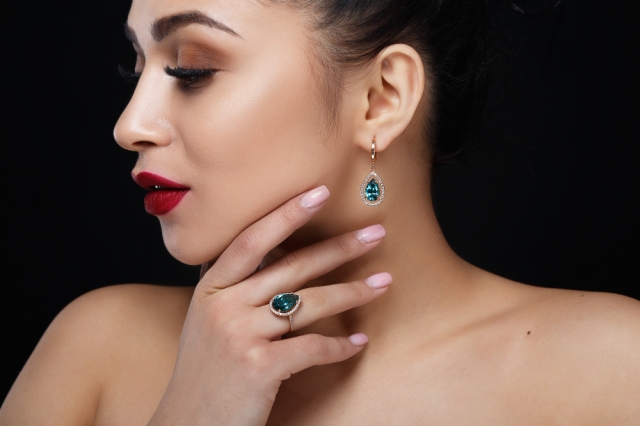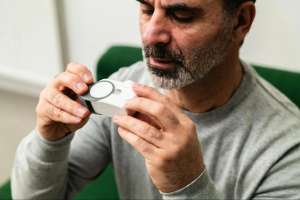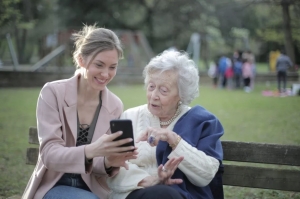Grandmother's engagement ring sits in a drawer, its art deco setting feeling outdated. A deceased aunt's tennis bracelet remains unworn because the clasp broke years ago. These scenarios play out in households across America, where precious heirloom jewelry holds deep sentimental value but no longer fits modern lifestyles or aesthetic preferences.
The solution lies not in letting these treasures gather dust, but in the sophisticated art of jewelry repurposing. This process transforms outdated or damaged heirloom pieces into contemporary luxury designs while preserving their emotional significance and intrinsic value. The result bridges generations, creating something both meaningfully connected to the past and beautifully suited for today.
Understanding the Value of Heirloom Jewelry
Heirloom jewelry carries value far beyond its precious metals and gemstones. Each piece tells a story, represents a relationship, and connects us to family history. However, jewelry trends evolve significantly over decades. A 1970s cocktail ring or 1950s brooch might feel out of place in today's wardrobe, leading to the unfortunate reality that meaningful pieces remain unworn.
The metals and gemstones retain their inherent worth regardless of their current setting. A diamond holds the same brilliance whether mounted in a Victorian-era setting or a sleek modern bezel. Precious metals like gold and platinum maintain their value and can be melted down and reformed without losing their essential properties. This foundation makes repurposing both financially sensible and emotionally rewarding.
Many people hesitate to alter heirloom jewelry, feeling they might dishonor the memory of its previous owner. Yet repurposing actually honors that memory by giving new life to something precious. The loved one who originally wore the piece would likely prefer seeing it enjoyed daily rather than hidden away. The transformation process can even create multiple pieces from one original item, allowing several family members to carry forward the legacy.
Technical Aspects of Jewelry Transformation
Professional jewelry repurposing requires specific technical knowledge and careful planning. The process typically begins with a thorough evaluation of the existing piece. A qualified jeweler examines the condition of gemstones, checking for chips, cracks, or loose settings that might affect the new design. They assess the metal's purity and condition, determining what can be salvaged and what might need replacement.
Stone removal presents particular challenges, especially with vintage pieces where adhesives or setting techniques differ from modern standards. Prong settings generally allow for easier stone extraction than bezel or channel settings. Gemstones must be heated carefully during removal to prevent thermal shock that could cause cracking. Some stones, particularly emeralds with their natural inclusions, require extra caution during this process.
Metal transformation involves either reshaping existing material or combining it with new metals to achieve the desired design. Gold alloys can be adjusted during the melting process to change color. For example, rose gold contains copper that creates its pinkish hue, while white gold incorporates palladium or nickel. Understanding these metallurgical principles ensures the final piece maintains both beauty and durability.
The design phase requires balancing the original piece's character with contemporary aesthetics. A skilled designer might preserve distinctive elements like milgrain detailing or engraving patterns while updating the overall silhouette. They consider how the wearer's lifestyle affects design choices. Someone with an active lifestyle might benefit from a lower-profile setting, while others might prefer more dramatic presentations.
Popular Repurposing Techniques and Transformations
Converting rings represents one of the most common repurposing requests. Large cocktail rings from the 1960s and 1970s often feature beautiful center stones that translate beautifully into modern engagement rings or pendants. The process involves carefully removing the center stone and creating a new setting that complements contemporary preferences. Side stones can be repurposed into matching earrings or a coordinating bracelet.
Brooch conversions offer tremendous creative possibilities. These pieces often contain multiple gemstones that can be redistributed across several new items. A large floral brooch might become a pendant necklace featuring the center stone, with smaller accent stones becoming earrings. The metal can be melted down and reformed into a modern chain or setting elements.
Bracelet transformations frequently involve updating clasps and links to improve both security and comfort. Tennis bracelets with broken clasps can be converted into necklaces or divided into multiple smaller pieces. Charm bracelets can be reimagined as contemporary link bracelets, with meaningful charms integrated as design elements rather than dangling attachments.
Necklace repurposing often focuses on length adjustments and pendant modifications. Long rope pearls from the 1920s might be shortened and restrung with modern findings, creating a more versatile piece for contemporary necklines. Multi-strand necklaces can be simplified into single-strand designs with the extra materials creating matching earrings.
Preserving Sentimental Value Through Design
The most successful heirloom transformations maintain a clear connection to the original piece while embracing modern functionality. This balance requires thoughtful design decisions that honor the past while serving present needs. Incorporating distinctive elements from the original helps maintain that emotional connection.
Engraving and personalization add layers of meaning to repurposed pieces. Original engravings can be preserved and supplemented with new additions, creating a timeline of family history within a single piece. Birthstones can be added to commemorate new family members, extending the piece's legacy forward.
Photography and documentation of the transformation process creates a meaningful record for future generations. Before and after images, along with written descriptions of the original piece's history and significance, ensure the story continues alongside the transformed jewelry. Some families create small albums documenting their heirloom transformations, preserving both the physical and emotional journey of each piece.
The Sustainable Luxury Movement
Jewelry repurposing aligns perfectly with growing consciousness about sustainable luxury consumption. Rather than purchasing newly mined materials, repurposing maximizes the value of existing resources. This approach reduces environmental impact while creating something entirely personal and meaningful.
The process also offers significant cost advantages compared to purchasing new luxury jewelry. Working with existing precious metals and gemstones eliminates the markup typically associated with retail jewelry purchases. The investment goes toward skilled craftsmanship and design rather than raw materials, often resulting in superior quality at a lower total cost.
Many discerning clients now prefer the unique story that comes with repurposed jewelry. These pieces carry authentic history and personal significance that cannot be replicated in mass-produced items. The result is truly one-of-a-kind luxury that reflects individual taste and family heritage.
Finding the Right Professional Partnership
Successful heirloom repurposing requires partnering with experienced professionals who understand both technical requirements and emotional significance. Look for jewelers with specific experience in heirloom work, as this specialization requires different skills than creating new pieces from scratch.
Quality jewelry stores Beavercreek Ohio such as Sonny's Diamonds are experts in heirloom services because of their established client relationships and reputation for craftsmanship. These professional jewelers you choose understand the delicate balance between preserving sentiment and creating contemporary appeal.
The consultation process should include detailed discussions about the original piece's history, the client's lifestyle needs, and design preferences. A skilled professional will offer multiple transformation options, explaining the benefits and limitations of each approach. They should provide realistic timelines and transparent pricing that accounts for both labor and any additional materials needed.
Creating Tomorrow's Heirlooms Today
Repurposed heirloom jewelry represents more than just updated fashion. These pieces become the foundation for new traditions, carrying forward family stories while creating fresh chapters. Children and grandchildren will wear these transformed pieces with knowledge of their rich history and the thoughtful care taken to preserve their legacy.
The art of jewelry repurposing transforms forgotten treasures into cherished daily companions. Through skilled craftsmanship and thoughtful design, outdated pieces become contemporary luxury items that honor the past while embracing the present. This process ensures that precious family heirlooms continue their journey through generations, adapted for modern life but anchored in enduring love and memory. Whether transforming a Victorian locket into modern earrings or updating a mid-century cocktail ring for daily wear, repurposing breathes new life into jewelry that might otherwise remain hidden away, ensuring these precious connections between past and present continue to shine.






